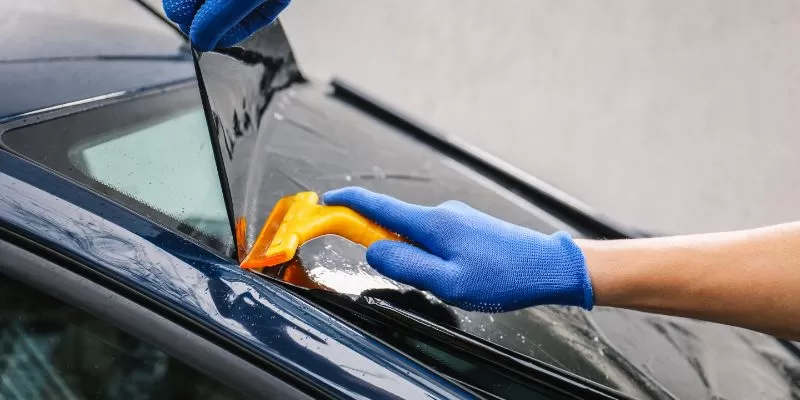Car Window Tinting for Warm Decrease and Power Efficiency
Car Window Tinting for Warm Decrease and Power Efficiency
Blog Article
Window Tinting Laws and Standards: What You Need to Know Before Tinting Your Automobile
Before continuing with home window tinting for your lorry, it is important to acquaint yourself with the varied regulations and guidelines that control this practice across different states. These guidelines determine the permissible degrees of color darkness, typically gauged by noticeable light transmission (VLT) percents, and consist of details terms for front windscreens intended at making certain roadway safety.
Introduction of Home Window Tinting Regulations
Window tinting laws are regularly subject to variant throughout different jurisdictions, mirroring local laws and security considerations. These legislations dictate the acceptable levels of color darkness and reflectiveness on lorry windows, making certain that chauffeurs keep ample presence while also safeguarding against harmful UV rays and heat.
Many guidelines categorize home window tinting based upon the Visible Light Transmission (VLT) portion, which indicates the quantity of light that can travel through the home window. Generally, lower VLT percents indicate darker colors. Regulations frequently differentiate between the front, side, and rear windows, with more stringent restrictions put on the front windshield to improve security for both the vehicle driver and various other road users.
Compliance with home window tinting regulations is critical, as violations can result in penalties, necessary removal of the tint, and possible boosts in insurance policy costs. It is important for car proprietors to acquaint themselves with local legislations before proceeding with home window tinting setups.
State-by-State Color Rules
Comprehending the details window tinting policies in each state is crucial for lorry proprietors seeking to conform with the law. Each state in the U.S. has developed its own collection of policies governing home window tinting, which can differ substantially. These regulations usually dictate the allowable levels of color darkness, the kinds of windows that can be tinted, and any medical exceptions that might apply.
For instance, states like California have strict limitations on tint darkness for front windows, while others, such as New Mexico, may allow darker tints. Additionally, specific states mandate certain exposure portions for various home windows, consisting of the windshield, front side home windows, and rear windows. It is crucial for automobile owners to acquaint themselves with their state's legislations to stay clear of prospective fines or penalties.
Additionally, some states may call for a qualification sticker label to be put on tinted home windows, suggesting conformity with state legislations. Failing to comply with these regulations not only risks legal consequences however can also influence security and presence while driving. Car proprietors ought to conduct extensive research study or get in touch with local authorities to ensure full understanding and conformity with state-by-state color laws.
Allowed Tint Kinds and levels
Several lorry owners might be surprised to find out that enabled color degrees and types differ widely across various states. Each state has actually developed its own guidelines regarding the permissible darkness and reflectivity of home window tint, commonly measured by Visible Light Transmission (VLT) portions. VLT describes the amount of light that can go through the tinted windows; therefore, a lower portion indicates a darker tint.

Moreover, the kinds of color materials allowed can vary, with some states forbiding metallic or mirror-like finishes. It is necessary for lorry proprietors to familiarize themselves with their state's details legislations to make sure compliance. Non-compliance can result in penalties, necessary elimination of the color, or other legal effects, making it important to comprehend these policies before proceeding with installation.
Medical Exceptions for Tinting
While not all states offer allowances for medical exemptions regarding home window tinting, those that do recognize the need for particular individuals to boost presence and comfort as a result of clinical conditions. Various medical problems, such as lupus, skin cancer, and specific eye problems, can render individuals specifically conscious sunlight. These people may require darker colors to protect themselves from harmful UV rays and glare.

It is necessary to note that despite a medical exception, there might still be limitations on the level of color allowed. Compliance with state regulations makes certain that people are both safeguarded and within legal limits. Those thinking about medical exemptions ought to contact their neighborhood Division of Electric motor Autos or equal authority to recognize the procedures and demands essential to apply for an exemption properly.
Charges for Non-Compliance
Falling short to abide by window tinting legislations can Extra resources bring about considerable fines, which differ by state. Regulation enforcement companies are equipped to release citations for vehicles that do not adhere to the specified tinting guidelines. These penalties generally include fines, which can vary from small total up navigate to this site to a number of hundred dollars, relying on the intensity of the offense and the state concerned.
In some territories, duplicated offenses might lead to rising fines or additional penalties, such as compulsory court looks. Non-compliance may necessitate the removal of prohibited tinting, frequently at the owner's cost. In severe instances, habitual offenders may face suspension of their vehicle registration until compliance is attained.
Furthermore, insurance policy implications may develop from obtaining numerous citations for window tint violations. Insurance companies may watch such violations as an indication of riskier habits, potentially bring about raised costs or problem in coverage.
To stay clear of these fines, it is critical for car owners to acquaint themselves with their local window tinting laws and make certain that their automobile complies (Window Tinting). This positive method not only prevents legal ramifications yet also advertises roadway security
Conclusion

Most policies classify home window tinting based on the Visible Light Transmission (VLT) percent, which indicates the amount of light that can pass with the window. Compliance with home window tinting policies is crucial, as offenses can result in fines, necessary elimination of the color, and prospective rises in insurance policy costs.Understanding the certain home window tinting guidelines in each state is crucial for automobile owners seeking to comply with the regulation. These regulations often dictate the allowable levels of color darkness, the types of home windows that can be tinted, and any kind of medical exceptions that may apply.
For instance, states like California have stringent restrictions on tint darkness for front home windows, while others, such as New Mexico, may permit darker tints.
Report this page